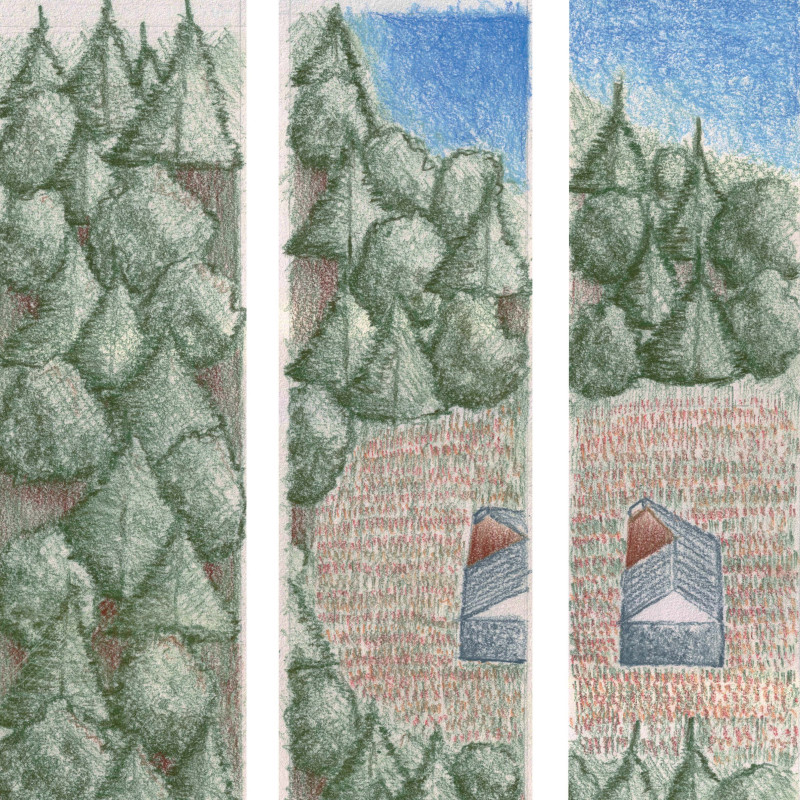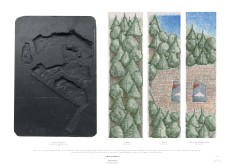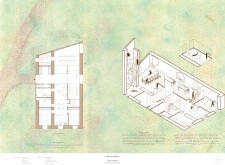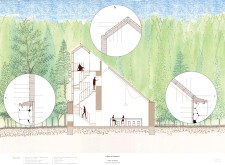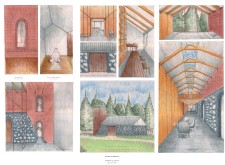5 key facts about this project
The design in Latvia serves as a calming retreat that connects with nature while providing spaces for creativity and relaxation. Centered on a guest house and workshop, the project invites visitors seeking a peaceful escape. The guiding theme, "A Sea of Trees," emphasizes a bond with the landscape, promoting tranquility and harmony in the experience of the environment.
Design Organization
The layout includes two main areas: an atelier and the guest house. These spaces are positioned between two separation walls, one made of wood and the other of stone. This arrangement enhances functionality while maintaining a clear sense of space. Guests transition smoothly from the lobby to either the living room or the tea workshop, allowing for varied interactions within a unified design.
Experiential Integration
The tea workshop is a key focus in the design, offering visitors an engaging way to experience tea production. This area includes a drying space for organic leaves, allowing guests to connect with nature through hands-on activities. Visitors can create their own blends, which fosters a sense of creativity and connection with the materials. Complementing this area is an exhibition space, which promotes sharing experiences and encourages a sense of community among guests.
Sustainability Practices
Sustainability plays an important role in the design choices made. The existing stone barn walls are preserved, honoring the historical context of the location. Traditional Latvian wood is used throughout the construction, supporting environmentally friendly practices while emphasizing local craftsmanship. This approach creates a visual relationship with the landscape and minimizes environmental impact.
Aesthetic Considerations
The architecture features gentle lines and utilizes natural light effectively, creating an atmosphere that encourages relaxation and reflection. The design frames views of the surrounding landscape, inviting visitors to experience nature directly. This thoughtful approach connects the interior and exterior spaces, enhancing the overall visitor experience. Each aspect of the design contributes to a clear narrative, reflecting the unique characteristics of the site.


